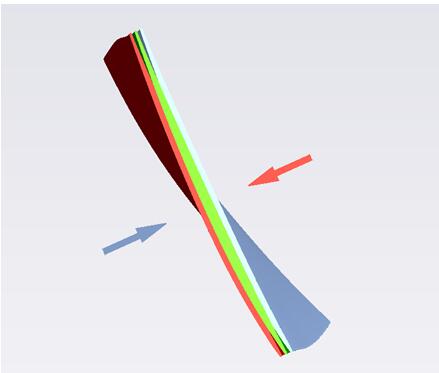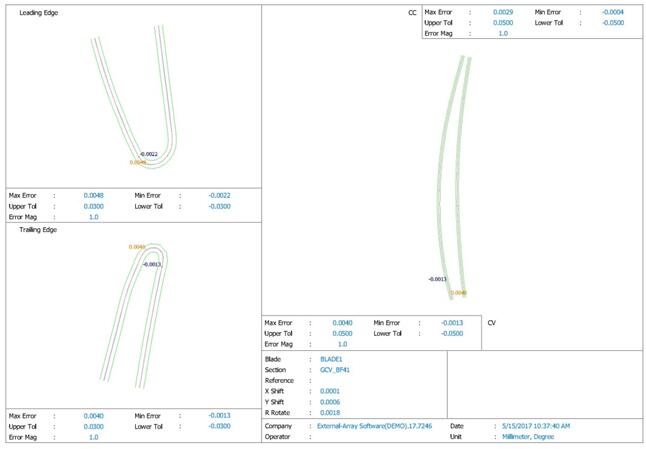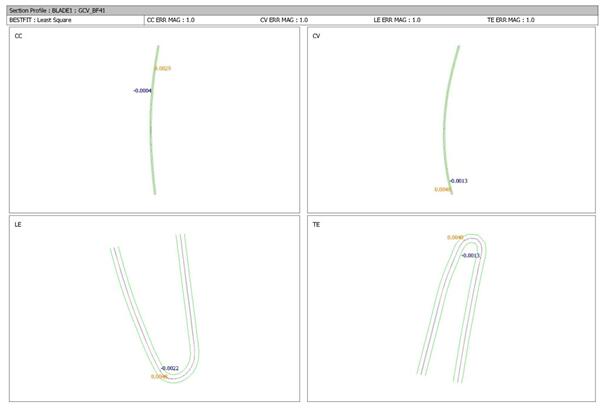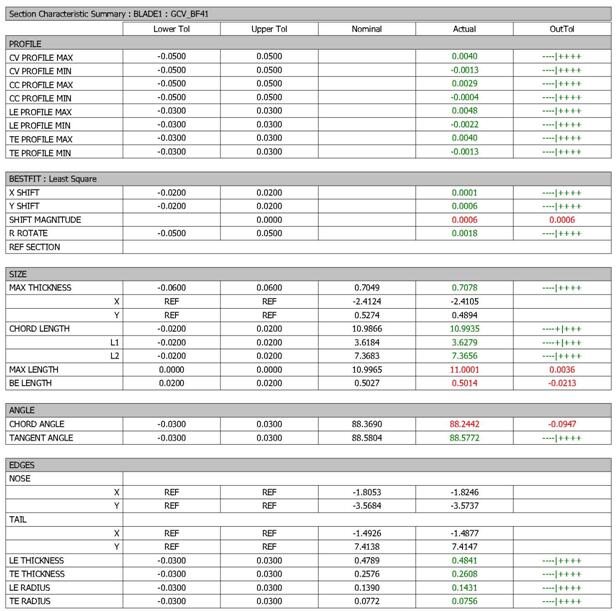[blade actual photo]

- Again, such extremely thin blades tend to cause slight blade bending under the force of the measurement when measuring the top section (as shown in the figure below, when the blade is measured, the blade is subjected to the force of the force to bend toward the back of the blade, and vice versa). Although the amount of bending deformation is not large, considering the extremely thin blade itself, the relative deformation amount is still very considerable, which has a very large influence on the contour and position of the measured blade type.

In particular, when measuring the leading and trailing edges of the blade, the actual blade profile is inevitably subject to the shape and/or positional deviation of the theoretical model, so that the incident light direction set according to the theoretical model cannot be orthogonal to the actual profile. If the angle range of the incident light allowed by the probe is larger, the fault tolerance of the probe is better. Otherwise, the angle of the incident light is slightly deviated, and the probe cannot receive the reflected light signal, resulting in the missing point.

The CORE White Light Blade Measurement System is an optical, non-contact point-scan measurement device designed and optimized for blade measurement in both hardware and software. CORE-DS's white spot probe uses white light as the light source. It has higher resolution than contact measurement and its spot diameter is only 35μm. It can detect the smallest geometric features and defects on the surface of the measured object, especially Suitable for the measurement of the inlet and outlet sides of the blade. CORE uses a white light probe for measurement, which can avoid the stylus radius compensation error that the contact probe is prone to during the measurement of the blade, which makes the measurement result more accurate. Compared to other optical measuring equipment, CORE-DS's white light measuring head has high applicability to the surface of the object. It can be measured without any treatment on the surface of the object. The objects that can be measured include high-gloss surfaces, black surfaces and even mirrors. Object, and the angle between the light and the surface of the object can be as low as 5°.



From the measurement results, the maximum thickness of the blade is 0.7 mm, the maximum chord length is 11 mm, and the exhaust rim radius is only 0.075 mm. Test results show that CORE has the ability to measure very small blades and is more effective than contact probes and other optical probes.
Peppermint oil is versatile that can be used aromatically, internally and topically to address a number of health concerns.
Peppermint oil valued for its cooling effects and helps to relieve sore muscles .In addition to this, Peppermint Essential Oil displays antimicrobial properties, that is the reason why it can be used to fight infections and even freshen your breath. It`s safe for both internal and external use in appropriate amounts and can be used with or without a carrier oil to dilute it .
Peppermint Essential Oil
Pure Peppermint Oil,Peppermint Essential Oil,Natural Peppermint Essential Oil,Pure Peppermint Essential Oil
Xinhui Gangzhou Flavors&Fragrance Co.,Ltd , https://www.xhgzff.com